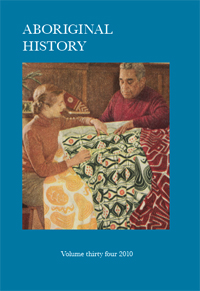Country
The Geynyon, according to the estimation of Norman Tindale, had 1,400 square miles (3,600 km2) of territory. They ranged from Stanthorpe just north of the border with New South Wales to around Hendon and Allora, which formed their northern limit. To the east, their lands extended as far as the Great Dividing Range. Their western frontier lay around Herries Range and beyond Thane, including Warwick and the area close to Leyburn. R. H. Mathews also claimed Inglewood was part of their territory, which Tindale did not accept. In Margaret Sharpe's map of Bundjalung dialects, based on the work of Terry Crowley, the Logan River marked their eastern border with the Yugambeh, while their southern frontier with the Githabul lay just beyond Killarney.

Norman Barnett Tindale AO was an Australian anthropologist, archaeologist, entomologist and ethnologist.

Stanthorpe is a town situated in south east Queensland, Australia. The town lies on the New England Highway near the New South Wales border 223 kilometres (139 mi) from Brisbane via Warwick, 56 kilometres (35 mi) north of Tenterfield and 811 m above sea level. The area surrounding the town is known as the Granite Belt. At the 2016 census, Stanthorpe had an urban population of almost 5,000.

New South Wales is a state on the east coast of Australia. It borders Queensland to the north, Victoria to the south, and South Australia to the west. Its coast borders the Tasman Sea to the east. The Australian Capital Territory is an enclave within the state. New South Wales' state capital is Sydney, which is also Australia's most populous city. In September 2018, the population of New South Wales was over 8 million, making it Australia's most populous state. Just under two-thirds of the state's population, 5.1 million, live in the Greater Sydney area. Inhabitants of New South Wales are referred to as New South Welshmen.
This page is based on this
Wikipedia article Text is available under the
CC BY-SA 4.0 license; additional terms may apply.
Images, videos and audio are available under their respective licenses.
The Tagalag are an indigenous Australian tribe of northern Queensland.
The Gidabal, also known as Kitabal and Githabul, are an indigenous Australian tribe of southern Queensland, who inhabited an area in south-east Queensland and north-east New South Wales, now within the Southern Downs, Tenterfield and Kyogle Local Government regions.

The Bundjalung people are Aboriginal Australians who are the original custodians of northern coastal area of New South Wales (Australia), located approximately 550 kilometres (340 mi) northeast of Sydney, an area that includes the Bundjalung National Park.
The Goeng or Goeng Goeng were an indigenous Australian tribe of the state of Queensland. They lived in the area of the area of present day Gladstone.
The Koamu (Guwamu) were an indigenous Australian people of the state of Queensland.
The Mangarayi, also written Mangarai, were an indigenous Australian people of the Northern Territory.
The Panyjima are an indigenous people of the Pilbara region of Western Australia.
The Kalaako (Kalarko) were an indigenous Australian people of the Goldfields-Esperance region of Western Australia.
The Malngin were an indigenous Australian people of Western Australia. The Malngin language was a dialect of Gurindj.
The Punthamara were an indigenous Australian people of the state of Queensland.
The Kambuwal were an indigenous Australian people of the state of Queensland.
The Kunandaburi or Karendala (Garandala) were an indigenous Australian people of the state of Queensland.
The Andakerebina were an indigenous Australian people of the Northern Territory.
The Julaolinja were an indigenous Australian people of the state of Queensland.
The Iningai (Yiningayi) were an indigenous Australian people of the present-day Longreach Region in the state of Queensland.
The Djakunda were an indigenous Australian people of the state of Queensland.
The Kalibal (Gullibul) were an indigenous Australian people of New South Wales.
The Paaruntyi are an indigenous Australian people of the state of New South Wales. They are not to be confused with the Parrintyi.
The Jingili or Jingulu are an indigenous Australian people of the Northern Territory.
The Mudburra are an indigenous Australian people of the Northern territory.







